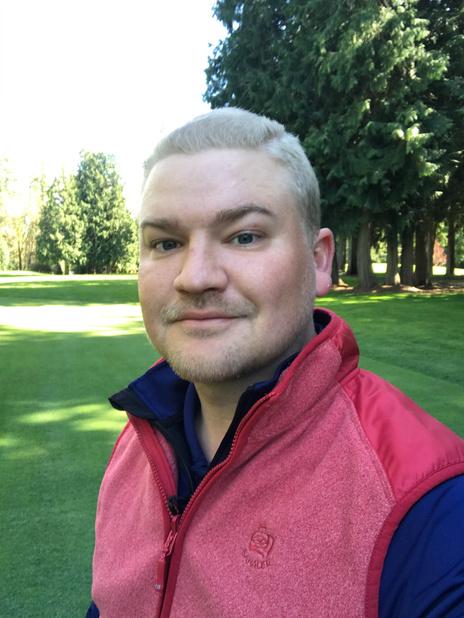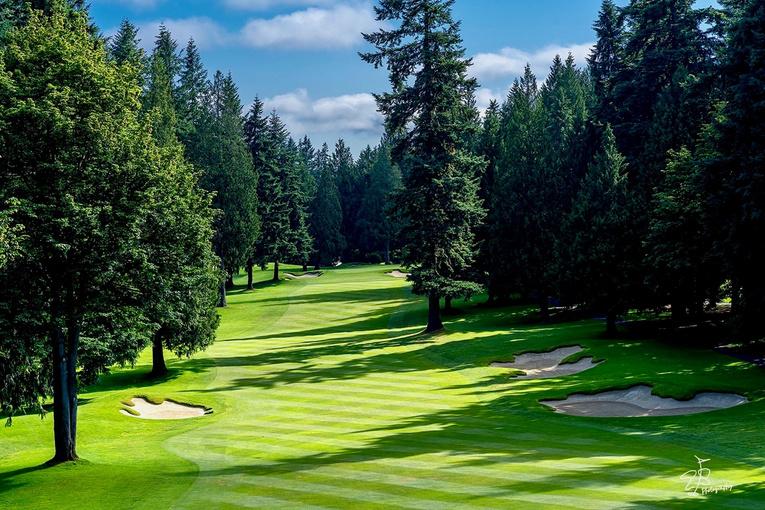
3 minute read
Turf Talk with Charlie
from July 2023 Tom Tom
by Sahalee
As we turn the page to July, summer is in full swing on the golf course(s) at Sahalee with no signs of slowing down over the coming months. Our outstanding grounds staff is bustling to present great conditions each day and preparing for our many upcoming member events including invitationals, member-members, and club championships.
Turf Care Reminders
During our peak summer season with members and guests enjoying Sahalee at its best, we typically host anywhere from 150 to 300 rounds on the course(s) each day. This high volume of play can strain our course(s) and turfgrasses; however, there are a few things we can all do to help preserve the best possible conditions throughout the summer season.

• Ball Mark Repair – During the course of a busy day, 3000-5000 individual holes of golf may be played by members and guests at Sahalee. Over a month that’s upwards of 100,000 total holes played. 100,000 holes played means 100,000 opportunities to hit a green leaving a pitch mark on a putting surface that’s a lot of ball marks! Please help our turf care team keep our greens smooth and blemish free by repairing any pitch marks made as well as one additional on each green Ball marks repaired immediately heal faster and leave the putting surface smooth for the players behind us
• Divot Mix vs Divot Replacement – A common question concerning divots is whether it is best to fill with sand and seed mix or replace the turf back in the divot The answer is “it depends ” If a large/deep divot is taken and remains intact with soil and turfgrass roots, replacing the divot will result in the quickest recovery Conversely, a shallow divot without soil and roots or a divot that is scattered in many pieces is best filled with divot mix
Regardless of the method, filling or replacing each divot made promotes turfgrass recovery and reduces bad breaks and challenging lies for future players.
Rules and Traffic Patterns – Policies and best practices for carts (both push and riding) are critical in preserving golf course conditions but often misunderstood. As a reminder, here are the best cart practices at Sahalee: o Riding carts should always follow daily cart rules indicating ‘carts on paths’ or ’90 degrees rule’. When the ’90 degrees rule’ is in place, players in carts should remain on cart paths until approaching their tee shot and then exit the path taking the shortest route to the ball in play. After playing the shot, players in riding carts may continue traffic on the fairway towards the green but should return to the cart path once they have advanced their ball near the putting surface Riding carts are restricted to cart paths on all par 3’s and are not permitted off paths within 30 yards of greens and tees o Push carts are always permitted off paths but are restricted from some areas to avoid excessive wear or damage Push carts are never to be used across greens, collars, or tees at Sahalee and are not permitted between greens and greenside hazards For instance, on 2 South, a push cart user can exit towards the path prior to reaching the pond or stay to the left of the greenside bunker, but should not navigate between the green and pond or green and bunker. o Ropes and stakes as well as wooden ‘bollards’ are used to indicate areas where cart (both riding and push) as well as foot traffic should avoid. Whether these be areas of excessive wear, wet conditions, damage, or newly establishing turf, limiting traffic will assist in recovery and improved conditioning.

NTA Donation for Turfgrass Education and Research
Each July we ask our membership to contribute to the Northwest Turfgrass Association in order to continue the growth of our industry through improved and sustainable turfgrass management. The Northwest Turfgrass Association (NTA) promotes development of turfgrass management professionals in Washington, Oregon, Idaho and British Columbia through university scholarships and continuing education programming Additionally, the NTA supports improvement in turfgrass management practices specific to the Pacific Northwest through university research grants at Washington State University and Oregon State University
Thanks to the support of our membership as well as those of other PNW private clubs, in 2022 the NTA raised over $60,000 towards these important golf causes Sahalee members’ commitment to turfgrass education and research is a testament to our love for the game and its continued growth in the future Thank you for your support!
See you on the course, Charlie
Schauwecker Director of Agronomy






